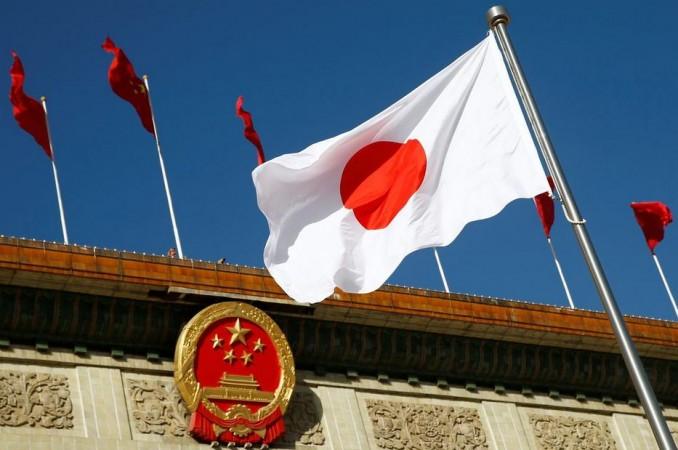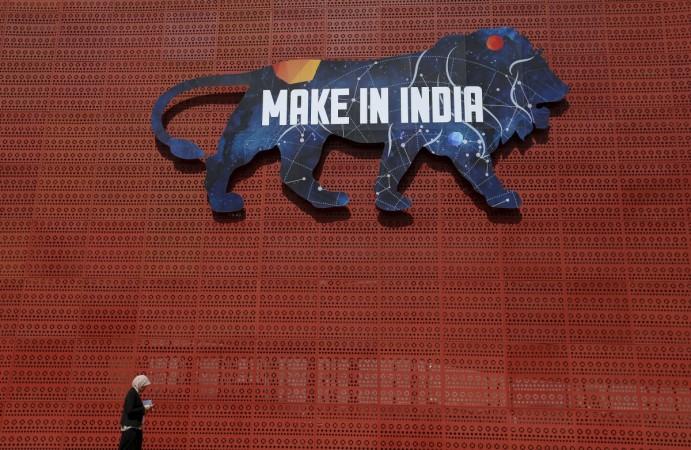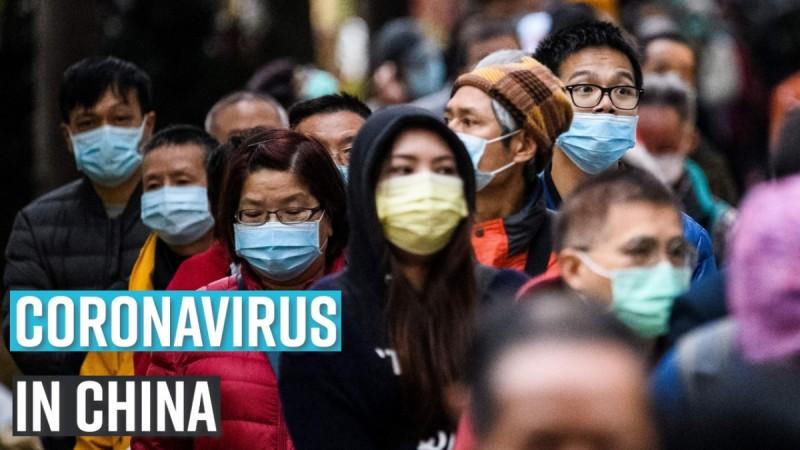The criticality today is saving lives of fellow citizens in view of the COVID-19 pandemic, which is claiming huge numbers and causing innumerable loss of lives. In order to sustain the lives saved, post lifting of lockdown, there will be a greater criticality staring at these citizens, namely the livelihood. The state of the economy as it is prevailing and the aspiration to build a five trillion economy, there is a need to pull all plugs to ensure its revival and a pace essential. This necessitates inviting maximum foreign investments and increase foreign exports.
If planning and preparation for grabbing the opportunities is not done immediately, the available opportunities may cease to exist.
The delay in informing the world about the pandemic and a few other related incidents have created a certain impression about the ambition and designs of China.
Exiting China post COVID-19 crisis
A large number of countries now feel that time has come to reduce dependence upon China for manufacturing and a strong need to create self-reliance of critical needs and where feasible shift manufacturing out from China to other suitable countries.
After three decades of building up manufacturing bases in China, costs had started rising even before the trade war, with examples like a 25 percent tariff on the lighting products which helped accelerate a shift that was set in motion 18 months ago – moving production bases out of China to Thailand, Bangladesh and other countries.
This was the situation playing out in boardrooms around the world in January 2020 as international companies accepted the reality that the US-China phase one trade deal was unlikely to improve the situation for their Chinese-based operations

Rising labour and environmental costs, increasing regulatory environment, the threat of more and higher tariffs, along with a sharp increase in the perception of risk associated with living and working in China meant that the manufacturing exodus that began at the end of the last decade would continue.
Although it was well known that the "Goldilocks Zone" provided by China's industrial heartlands for the last 30 years – in which the combination of costs, quality, human resources and infrastructure which was the main attraction – could not be matched in India, Bangladesh, Indonesia, Malaysia, Mexico, Thailand, Vietnam or anywhere else.
It is being felt that with some companies having already landed that Vietnam is already full, now, you have to wait in a queue. Right now, there's no waiting in Thailand, but it will too get full soon.
The trade war tariffs, resulted in China falling behind Mexico and Canada to drop from the first position to being the third-largest trading partner with the USA.
A 22 percent fall in Chinese exports to the US from a year earlier, including items like cellphones was seen last year. Instead the US started buying more goods from the countries to which Chinese-based manufacturers are fleeing.

With the U.S.-China trade war last year and the outbreak of the new coronavirus, American technology firms Apple, Microsoft and Google have reportedly looked to move more production of their hardware products out of China, the world's second-largest economy.
Google and Microsoft are accelerating their efforts to shift production of hardware to other parts of Asia, the Nikkei Asian Review reported last week.
Besides the above mentioned, many companies have been seriously exploring supply chain risk mitigation strategies. When corporates want to move out and make investments, they can for which specialists act as the bridge as they work closely with local governments and businesses to make it happen. Given the post-outbreak of pandemic and the apparent momentum — this could all play out more quickly than we expect.
The coronavirus pandemic has businesses and lawmakers intensifying efforts to move their supply chains out of China.
UBS' Evidence Lab's sixth US CFO survey findings released recently suggest over 76 percent of respondents are looking to shift supply chains as a response to protectionist policies such as trade tariffs. Furthermore, 66 percent of the respondents said they are moving production facilities, too, as a response to protectionist policies, 10 percent of the respondents are considering India for new incremental investment, compared to 14 percent in the past two surveys. At the same time, ASEAN countries have seen some pick-up from 11 percent in the last survey, to 15 percent in this survey. It appears that respondents looking to make an incremental investment in India have declined.
Japan has earmarked ¥243.5 billion of its record economic support package to help manufacturers shift production out of China as the coronavirus pandemic disrupts supply chains between the major trading partners.

The extra budget, compiled to offset the devastating effects of the pandemic, includes ¥220 billion for companies shifting production back to Japan and ¥23.5 billion for those seeking to move production to other countries. With the current robust Indo Japanese relations and an unprecedented friendship between the heads of the two countries, the opportunity is real and strikable.
The companies would like to move to countries with:
- Working environment almost as good as China
- Manufacturing costs which are similar as in China
- An attractive long-term investment climate in terms of Ease of Doing Business
- Sound institutional quality
- Transportation costs
- Transaction costs
- Emerging Market spectrum
- Currency volatility
- The market size (GDP)
- The skill quality, discipline, optimum output and employee behaviour
- Other aspects of sustenance and profitability and quality of governance
India fits the bill but needs to act FAST
India has the manpower, but skill levels fall short and government rules are relatively restrictive.
The good part is that India has improved its ease of doing business rankings in the recent past, second that all of these measures mentioned above are eminently feasible. The concern, however, is that unless India moves faster, others may have already seized the opportunity.

India must abandon its overconfidence that investors will come simply for its large population. India will have to be seen as a country with not only better ease of doing business but also having better rule of law enforcement, better justice dispensing system and with greater labour reforms. The current outbreak of pandemic will also impose the need for a better health care system with effective management in place. Unless we go scouting and inviting, demonstrating better opportunity, sustainability and accommodation, it may not be possible to get success in getting more companies to India.
India needs to undertake a concerted, whole-of-government push to boost investment levels and create the conditions manufacturers need to thrive, from steady power supplies to efficient port operations and customs clearance. Moreover, there is a need to understand the specifics of these businesses. Factories have unique requirements depending on what they make. This needs all in one agency to overcome barriers, cut time constraints and facilitate smooth shifting in the incoming companies.
Ethiopia alone has opened nearly a dozen industrial parks in recent years and set up a world-class government agency to attract foreign investment. This has given it a huge success.
The first set of companies leaving China started moving about two years ago, whereas, the second set of companies started moving out in mid-2019. The third major phase will start immediately as the COVID-19 situation stabilises.

India has not yet been able to take major advantage of the opportunities of the first and second set of companies moving out of China.
The prevailing situation indicates that the existing indigenous industrial activity is unlikely to be able to increase the production, industrial expansion or job creation.
The rising rate of unemployment and the current state of the economy, hence, have only two solutions. One foreign investment and addition industrial establishment and the second solution is job creation and better labour reforms including a transformational quality improvement of skill development.
The existing administrative setup in spite of its best efforts has not been able to get success in getting the companies shifting out of China to India.
The coming few months are the last opportunity to get the third and last set of companies moving out of China to India.
From China to India: What it takes?
An effective option to get results is to set up an "Empowered Taskforce of Professionals" with a clear mandate, responsibility, authority and resources to ensure that we are able to create the desired policy framework, incentives, homebound clearances, tax breaks and all essential provisions to ensure success and profitability of the incoming companies to a degree that all the emerging and new companies from US, EU and other regions look at India as the best option.
To construct a world-class environment for foreign manufacturing companies, we need greater integrity and honesty of purpose. A DNA change is not so quick. Yet, we can probably start on a war footing, creating an Apex body out of people with a proven record, people like Ratan Tata could Narayan Murthy, Azim Premji, Sridharan of Metro, and many such men of mettle along with strong younger professionals who are both expert and passionate. This kind of steering group could surely create a system that may yield results. The Government should support this wholeheartedly. A definite number of experts are willing to contribute their efforts towards Nation Building at this critical juncture.
Disclaimer: This is a guest post by Major General Dilawar Singh (Retd.), Senior Vice President of the Global Economist Forum ECOSOC, UN. He is the former Director-General NYKS at Ministry of Youth Services and sports. He was also Additional Director General of Rashtriya Rifles, has served six tenures in counter-terrorist areas, commanded two Counter-Terrorist Balallions and is the only officer to have received three citations therein. He holds unbroken records for academic and operational excellence as well as long-term planning for the Indian Army.









!['Had denied Housefull franchise as they wanted me to wear a bikini': Tia Bajpai on turning down bold scripts [Exclusive]](https://data1.ibtimes.co.in/en/full/806605/had-denied-housefull-franchise-they-wanted-me-wear-bikini-tia-bajpai-turning-down-bold.png?w=220&h=138)



